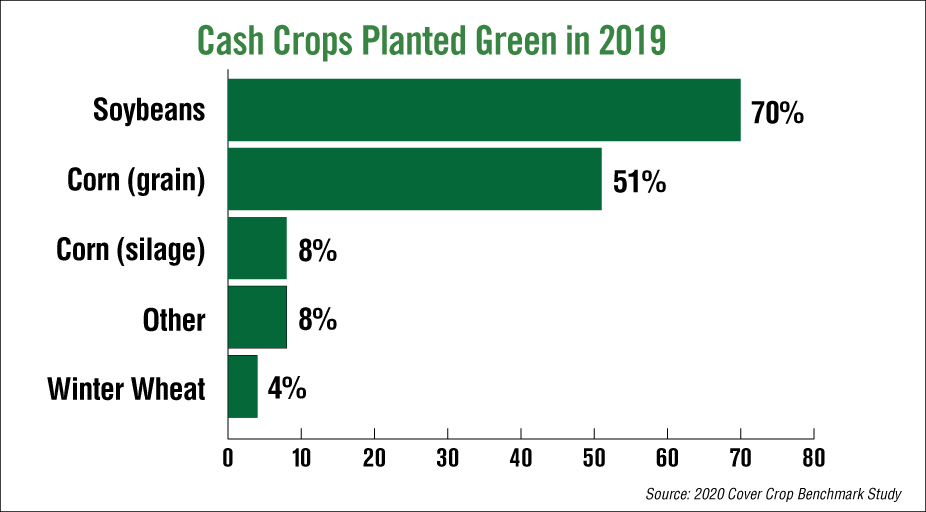Planting green has never been more popular. Growers’ interest in planting green is increasing, according to the results of the first-ever Cover Crop Benchmark Study conducted by Cover Crop Strategies.

A strong 48% of growers indicated that they had planted cash crops into a living cover crop during the 2019 growing season.
When growers were asked in the survey what cash crop was planted green, the top 2 responses were soybeans at 70% and corn for grain by 51%, followed by corn for silage at 8% and winter wheat, which was planted green by 4% of growers.
In 8% of cases, growers responded “other” with more varied answers, such as sweet corn, hemp, cereal rye, oats, avocadoes, yellow clover, sorghum sudangrass, maton rye, mung beans, alfalfa, sweet clover, winter triticale, sunflowers, barley, pumpkins, flax, peanuts, or millet.
“People told us there’s no way you can plant green like that and get a successful corn crop,” says Redwood Falls, Minn. farmer Grant Breitkreutz. “We figured out how to do it, and it works great. Our biggest indicator of success is earthworms.”
 These numbers are important because they show more growers are using this method to maximize benefits from cover crops a little longer into the spring. It’s also encouraging to see so many growers finding ways to grow covers alongside other important crops, besides corn and soybeans. That diversification of crop varieties is extremely important, says long-time Williamsport, Ind. no-tiller Rick Clark.
These numbers are important because they show more growers are using this method to maximize benefits from cover crops a little longer into the spring. It’s also encouraging to see so many growers finding ways to grow covers alongside other important crops, besides corn and soybeans. That diversification of crop varieties is extremely important, says long-time Williamsport, Ind. no-tiller Rick Clark.
“You can fall into a monoculture in your cover crop program just like you can fall into a monoculture in a cash crop program. Don’t do that. Be diversified,” he says.
Check back for more coverage of the Cover Crop Strategies first-ever Cover Crop Benchmark Study.






